You keep scrolling through Pinterest, but nothing feels right. The creamy ledgestone looks great on that farmhouse, but your place is more traditional. Then there’s that slick grey panelled look—but does it really go with your warm beige siding? Suddenly, the idea of adding stone veneer to your home feels less like an upgrade and more like a risk.
Sound familiar?
If you’re stuck between samples, unsure whether to match or contrast, or worried you’ll choose something that dates your house in five years—you’re not alone. Choosing the right stone veneer is one of those deceptively simple tasks that can quickly spiral into decision paralysis. It’s expensive, it’s semi-permanent, and everyone from your neighbour to your builder seems to have a different opinion.
Here’s the good news: matching stone veneer to your home’s exterior isn’t about following rigid rules or trends—it’s about understanding a few simple design principles and knowing how to apply them. That’s exactly what you’re going to walk away with here.
You’ll learn how to choose stone that suits your home’s style, how to avoid common aesthetic clashes, and how to feel confident that what you pick will actually enhance your home’s look—not compete with it.
Let’s break it down.
Understand Your Home’s Style First
Before you even think about colors, shapes, or textures, stop and take a good look at your home’s architecture. The biggest mistake people make when choosing stone veneer? Picking a style they like in isolation, rather than one that suits the actual design of their house.
Think of it like dressing for an event. You might love that trendy leather jacket—but it’s going to look odd at a black-tie wedding. Stone veneer works the same way: it needs to match the “dress code” of your home.
Here’s a quick guide to common home styles and what kind of stone typically works best:
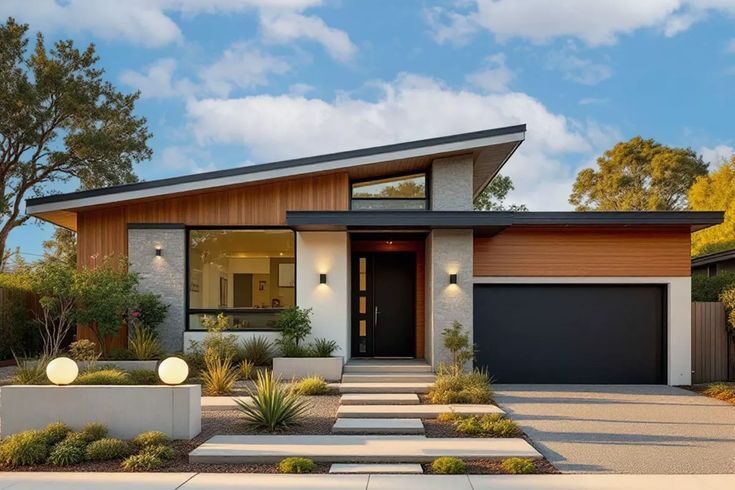
Modern or Contemporary Homes
Clean lines, minimal detail. Go for sleek, linear stone like dry stack ledgestone in cool tones (greys, charcoals). Avoid anything too rustic or rounded—it’ll clash.
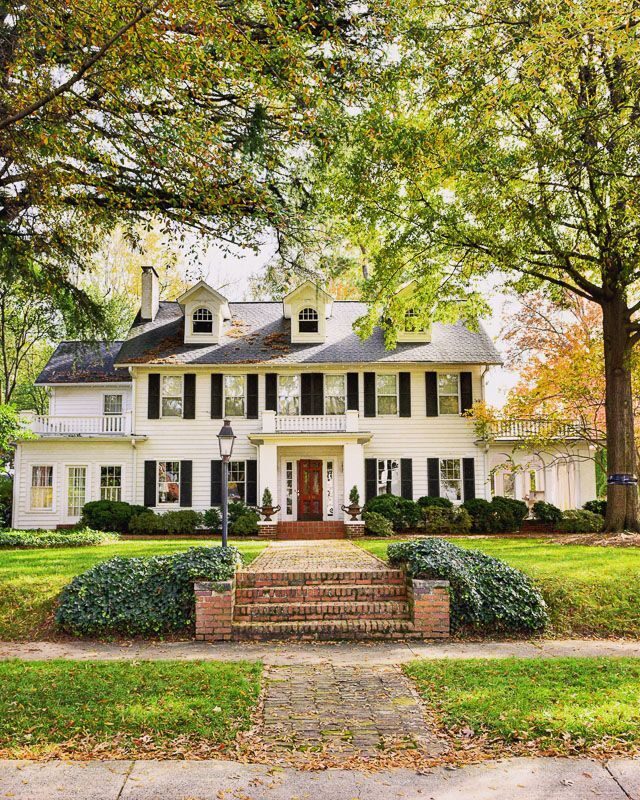
Traditional Homes
Think symmetry, brick accents, colonial or Victorian elements. Here, you’ve got a bit more flexibility. Ashlar or fieldstone styles in neutral, earthy colors blend well.
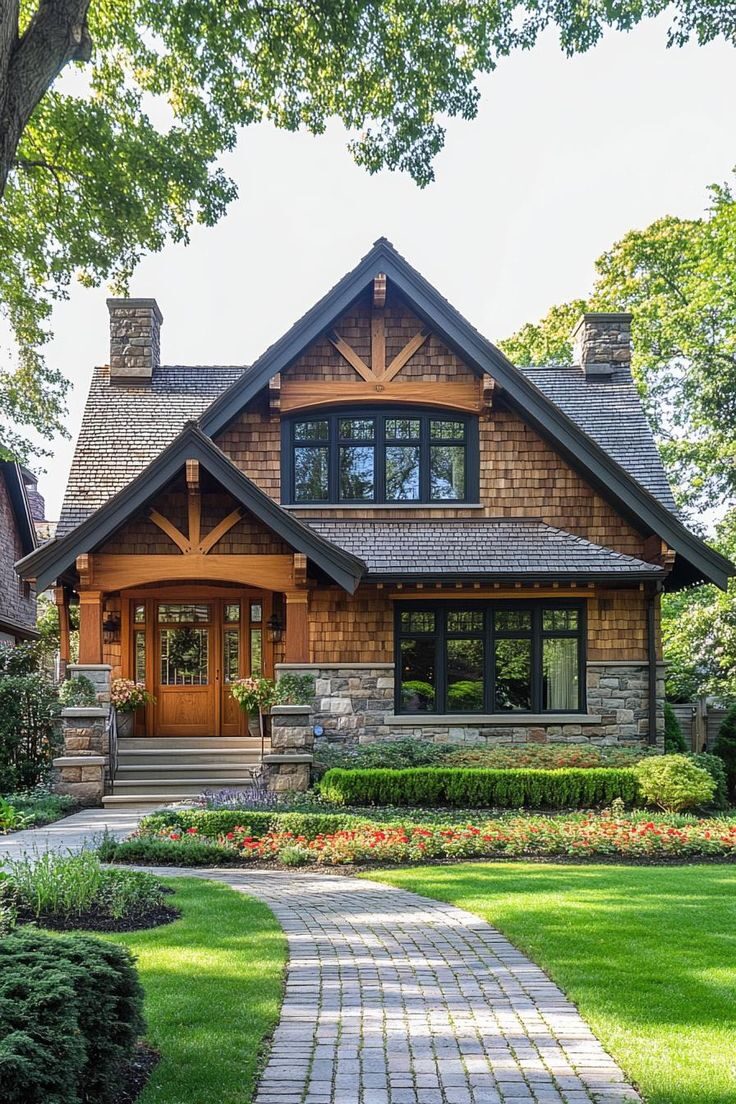
Cottage or Country Style
These homes love charm and texture. Cobblestone or tumbled stone in warm, soft tones adds character. Avoid overly polished looks—they’ll feel out of place.
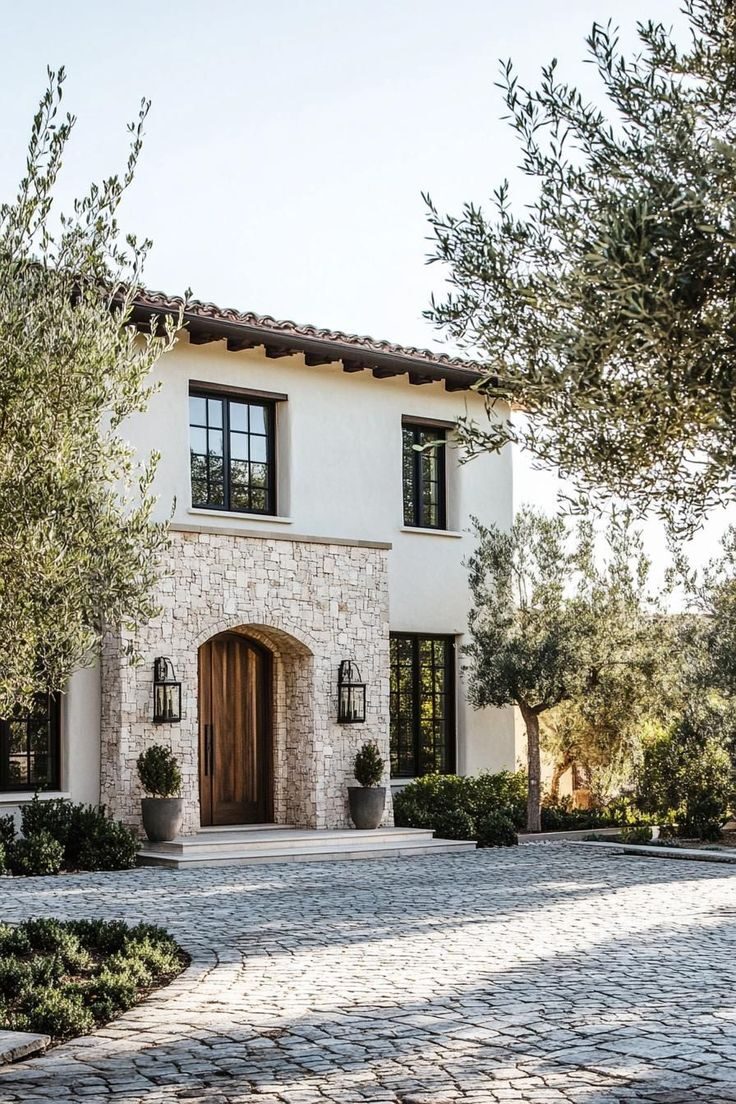
Mediterranean or Tuscan Style
Stucco walls, terracotta roofs—these call for rich, warm-toned stone like travertine or limestone. Texture should feel natural, not too rigid or geometric.
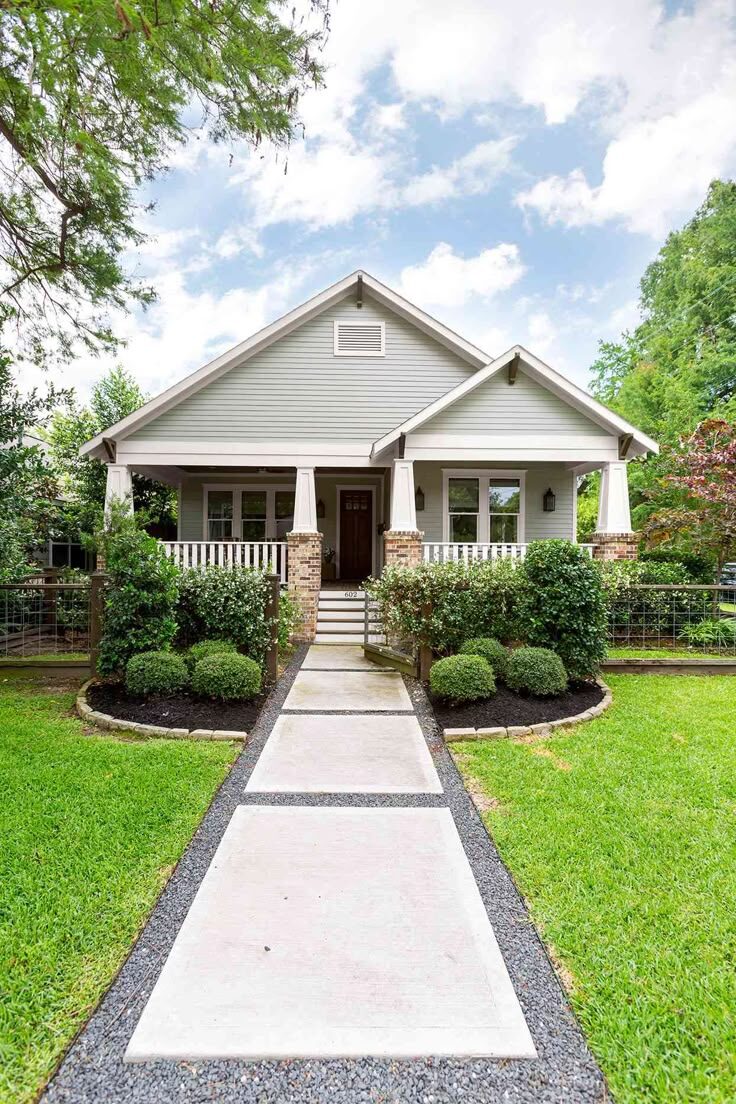
Craftsman or Bungalow
Think natural materials and earthy palettes. Ledgestone with some variation in color and depth works beautifully here. Stick to mid-tone browns, rusts, or greys.
If your home doesn’t neatly fit a category, focus on its key features. Is it more angular or rounded? Warm or cool in tone? Symmetrical or eclectic? Let those cues guide your veneer choice.
Pro Tip: Still unsure? Take a step back and photograph your home from the street. Seeing it in a single frame helps you view it more objectively—and spot what styles feel cohesive.
The Golden Rule: Complement, Don’t Compete
When you’re choosing stone veneer, it’s tempting to pick something bold, dramatic, or “on trend.” But here’s the truth: the best stone veneer doesn’t scream for attention — it supports everything else that’s already going on.
That’s why the golden rule is simple: complement, don’t compete.
You don’t want your stone veneer fighting with your siding, brickwork, roofing, or trim. Instead, it should feel like it belongs — as if it was always part of the home.
Here’s how to do that:
Start with What’s Already There
Think of your exterior materials like a team. Your siding, roof, doors, and window trims are already “players” on the field. The stone you choose needs to fit in with them — not try to take over the whole game.
- If your siding is busy or textured (like shakes or mixed materials), choose a simpler stone with clean lines.
- If your siding is smooth and minimal, you can afford more variation in the stone texture or pattern.
- Warm siding tones (like cream, beige, or red) pair best with warm stones (browns, tans, rusty greys).
- Cool siding tones (blues, greys, whites) work well with cooler stones (charcoal, blue-grey, slate).
Choose Either a Focal Point or a Background — Not Both
Want to use stone on your entryway columns and your entire front wall? Slow down. Using stone in too many places dilutes its impact and can make your home look mismatched or overly busy.
Ask yourself:
Where do I want people’s eyes to go first?
If it’s your front door, maybe stone just around the entryway makes sense. If it’s the chimney or base, keep it there and let everything else play a supporting role.
Let Your House’s Features Guide You
A stone veneer that complements your home enhances its best parts. One that competes with them makes it feel disjointed.
Here’s a quick side-by-side:
| Competes ❌ | Complements ✅ |
|---|---|
| Grey stone on a yellow-beige house | Warm brown stone on a yellow-beige house |
| Cobblestone on a sleek modern home | Dry stack on a sleek modern home |
| Busy stone + textured siding | Simple stone + textured siding |
Norm’s Notes: Use the 60-30-10 Rule
Designers often use this formula for interiors, but it works outside too:
- 60% of the exterior is your main material (siding)
- 30% is your secondary material (like stone)
- 10% is your accent (like doors, trim, shutters)
This helps keep the balance right — so nothing feels like it’s shouting over something else.
Match Undertones, Not Just Colors
Here’s where a lot of homeowners trip up: they hold a sample of stone veneer next to their siding and think, “It’s the same color — we’re good.” But a perfect color match can still look completely off if the undertones clash.
Why? Because undertones are the subtle hues beneath the surface color — and they make all the difference in whether materials feel cohesive or disconnected.
Warm vs Cool Undertones: The Basics
- Warm undertones include hints of yellow, red, gold, or brown. Think sandstone, rust, caramel, or earthy taupe.
- Cool undertones lean toward blue, grey, green, or even a soft purple. Think slate, charcoal, blue-grey, or icy whites.
Pro tip: If your siding has warm undertones and you pair it with cool-toned stone, the whole look can feel mismatched — even if the colors technically “go together.”
Norm’s Notes: Look at Your House in Natural Light
Colors change depending on lighting, especially outside. Take a look at your home’s exterior in daylight and compare it with your stone sample:
- Do they both lean warm or both lean cool?
- Do they feel like they belong in the same color family, not just the same color category?
Still unsure? Hold your stone veneer sample next to a sheet of plain white printer paper. This helps expose the undertone more clearly — warm tones will look more golden or red next to the white, while cool tones will show up as blue or grey.
Examples That Work (and Ones That Don’t)
| Siding Color | Undertone | Stone That Works ✅ | Stone That Clashes ❌ |
|---|---|---|---|
| Beige / Cream | Warm | Tumbled brown cobblestone | Cold grey ledgestone |
| Slate Blue | Cool | Charcoal dry stack stone | Yellow-toned limestone |
| Olive Green | Warm-neutral | Earthy mix of browns and rust | Bluish-grey veneer |
| Crisp White | Cool | Soft grey or slate | Sandy or golden hues |
Bottom Line
Don’t just ask, “Does this stone match my siding?”
Ask, “Do the undertones match the mood of my house?”
It’s the difference between a house that looks carefully designed and one that feels just slightly… off.
Think About Texture and Shape Too
When it comes to stone veneer, color gets all the attention — but texture and shape are just as important. They influence how the surface feels visually. Smooth or rough? Uniform or irregular? These choices affect whether your home looks rustic, modern, traditional, or something else entirely.
Get the texture wrong, and the stone might feel out of place — even if the color is spot on.
Common Stone Veneer Textures (and When to Use Them)
Here’s a quick breakdown of the most popular types:
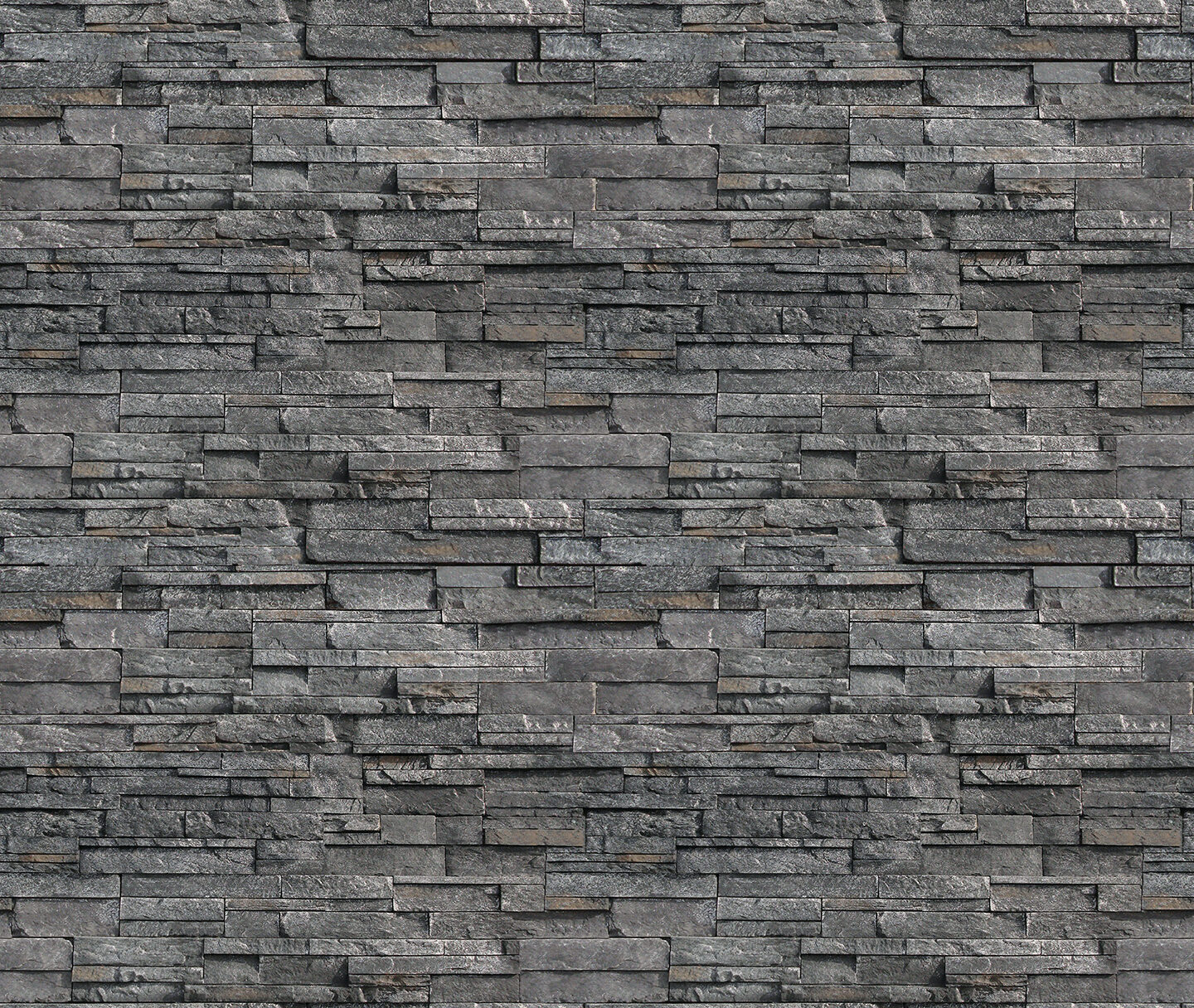
Ledgestone
- Look: Long, narrow pieces stacked horizontally. Clean lines, some variation.
- Best for: Craftsman, modern, transitional homes.
- Texture: Rough but uniform.
- Why choose it? It adds structure without feeling too heavy.
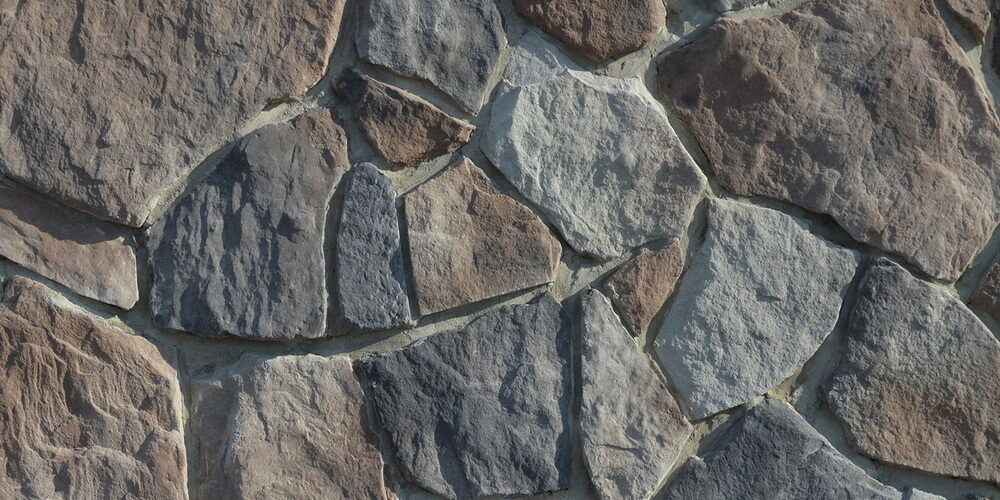
Fieldstone
- Look: Irregular shapes, rounded edges, more traditional.
- Best for: Cottage, country, or historic-style homes.
- Texture: Rough, natural.
- Why choose it? It feels like it came straight out of the ground — earthy and authentic.
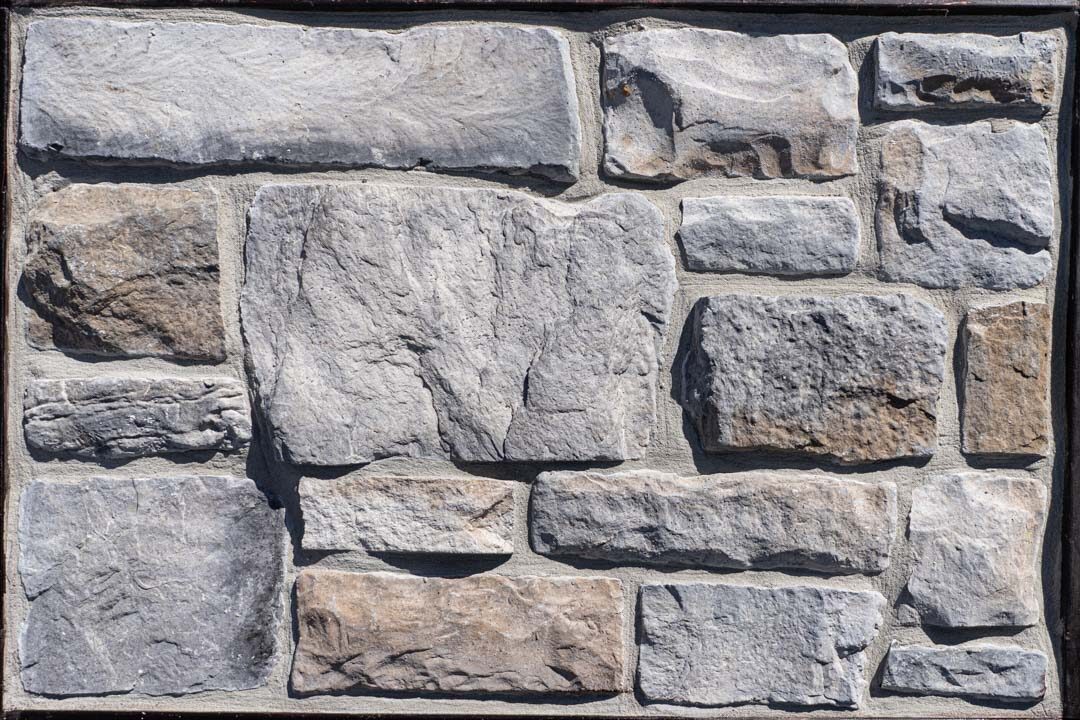
Cobblestone
- Look: Chunkier, brick-like shapes with rounded faces.
- Best for: Colonial, farmhouse, or rustic homes.
- Texture: Smooth to medium.
- Why choose it? Timeless and solid — a great “traditional” choice.
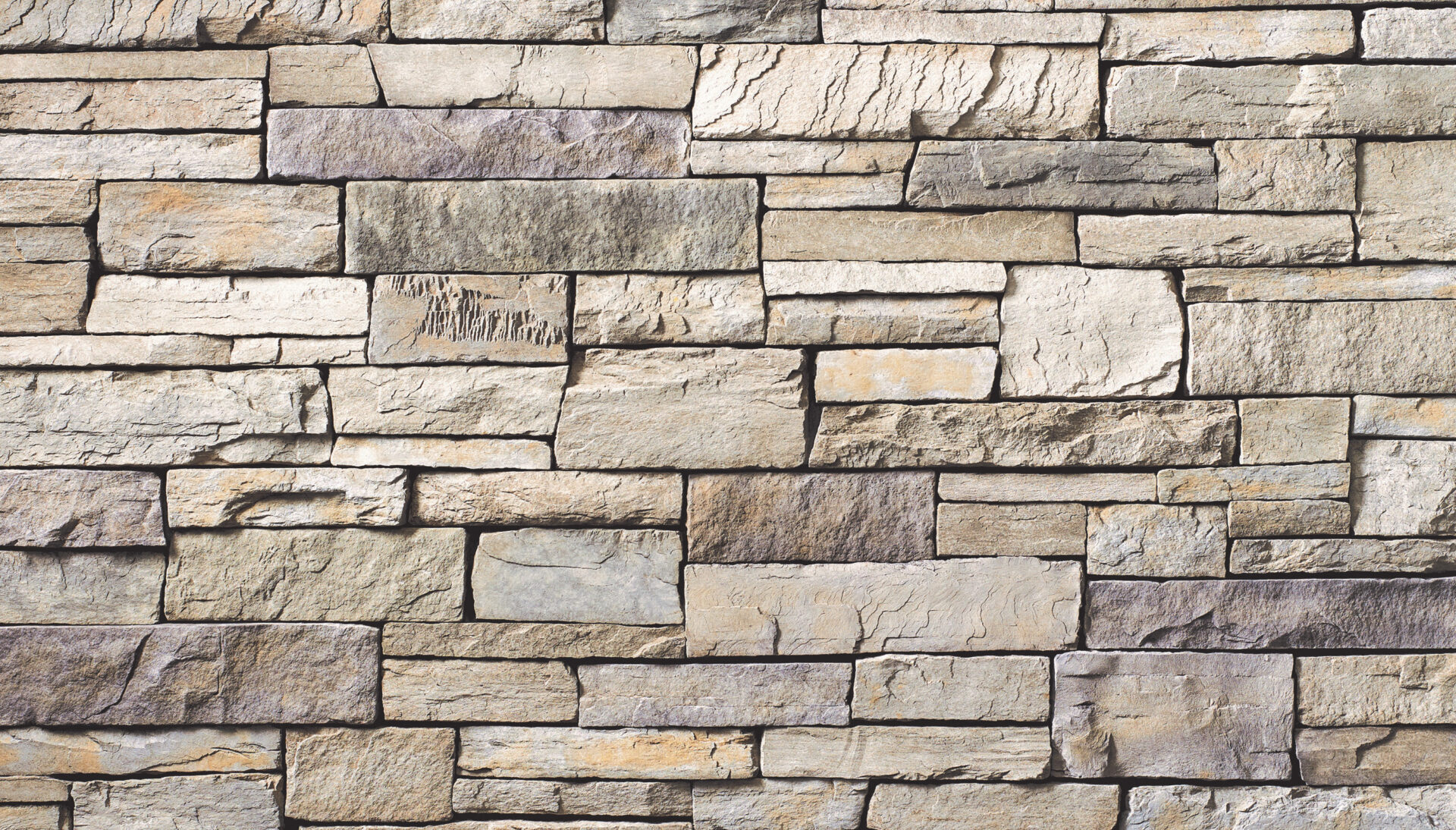
Dry Stack
- Look: No visible mortar joints, tightly fitted stones.
- Best for: Modern, minimalist, or updated craftsman homes.
- Texture: Clean but dimensional.
- Why choose it? It creates a seamless, streamlined look.
Norm’s Notes: Match Texture to Your Home’s Personality
- Sleek exterior? Go for smoother, more linear stone shapes (like dry stack or ledgestone).
- Charming or rustic home? Embrace texture and irregularity (like fieldstone or cobblestone)
- Want a subtle upgrade? Choose a stone with moderate texture — not too smooth, not too rough.
Remember: Just like fabrics in fashion, texture gives depth and tone. A flat wall with smooth stone can look lifeless. A heavily textured wall on a minimalist home can feel overwhelming.
Combine Shape and Color Thoughtfully
You might love a certain stone texture, but if the shape or color doesn’t align with the rest of your home, it won’t work. So always consider:
- What’s the overall style of my house?
- Do I want the stone to stand out or blend in?
- What textures already exist in my exterior (like woodgrain siding or stucco)?
Pairing Stone Veneer with Other Exterior Materials
Stone veneer rarely stands alone. Most homes mix materials — siding, brick, stucco, timber, even metal — which means your stone needs to play well with others. Done right, a mix of materials can add depth and character. Done wrong, it can look chaotic or mismatched.
Here’s how to pair stone veneer with other exterior elements without overcomplicating things.
Stone + Wood or Timber
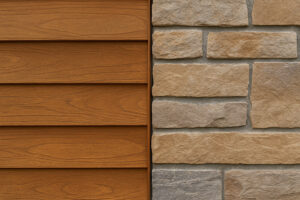
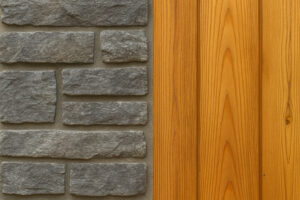
- Why it works: Both are natural materials, so they share a grounded, organic feel.
- Watch out for: Overdoing the rustic vibe. If you have heavy timber and heavy stone, it can feel too bulky.
- What works well:
- Use stone around the base or entry, and wood for accents like beams or shutters.
- Pair warm-toned stone (brown, rust, tan) with warm wood (cedar, oak, walnut).
Example: Craftsman-style bungalow with ledgestone skirt and stained timber columns.
Stone + Brick
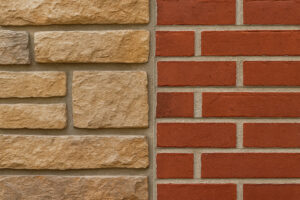
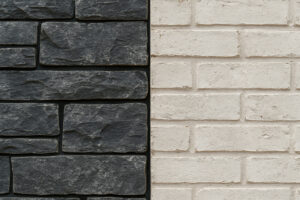
- Why it works: Stone and brick can complement each other when the tones and scale match.
- Watch out for: Competing patterns or colors. A busy red brick with multicolored stone will look disjointed.
- What works well:
- Stick to similar undertones. For example, pair a warm red brick with a beige or brown stone.
- Use one material as the “main” and the other as an accent.
Example: Traditional home with brick front and a stone-clad porch or chimney that blends in.
Stone + Stucco
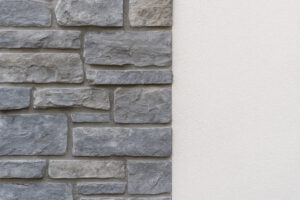
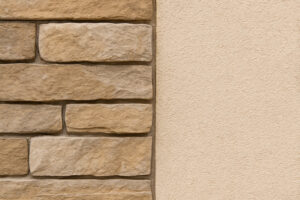
- Why it works: Stucco is clean and flat, which makes it a perfect backdrop for textured stone.
- Watch out for: Sharp contrast in style. A modern smooth stucco with a rustic fieldstone can feel mismatched.
- What works well:
- Match the undertones of the stucco and stone.
- Use stone to frame entryways or define lower sections of the wall.
Example: Mediterranean home with golden stucco walls and warm limestone accents.
Stone + Vinyl or Fiber Cement Siding
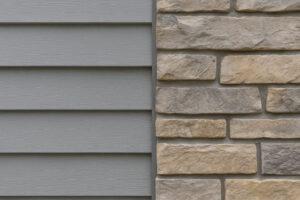
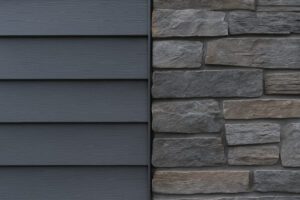
- Why it works: Stone adds a layer of visual interest to otherwise flat siding.
- Watch out for: Low-quality siding that looks plastic next to natural-looking stone.
- What works well:
- Choose stone that complements the siding color, not one that tries to contrast too much.
- Use stone for entryways, pillars, or lower walls (a “skirt”) to ground the home.
Example: Suburban home with neutral Hardie siding and gray-toned ledgestone along the base.
Norm’s Notes: Keep the Stone as the Accent
If you’re mixing multiple materials, let the stone act as a supporting character — not the star and the stage. It’s most effective when used with restraint.
Think of it as the frame that highlights your entry, your base, or your outdoor fireplace. Not something that has to wrap the entire home to make an impact.
Trends vs. Timeless: What’s Right for You?
Let’s be honest — it’s easy to get swept up in what’s trending. You see a gorgeous Pinterest board with sleek greys and sharp lines and think, “That’s what I want.” But two years later, you’re wondering why your home suddenly looks dated or out of sync with the neighborhood.
Here’s the key question: Do you want your home to look “in” right now, or still look good 10–15 years from now?
Spoiler alert: it’s possible to have both — if you’re smart about how you use stone veneer.
What’s Trending Right Now (and What to Watch For)
Trends can be inspiring, but they also have a shelf life. Here’s what’s currently popular — and how to avoid falling into the short-term trap:
➤ Trend: Cool-toned Greys & Charcoals
Looks clean and modern — but can feel cold or stark if overdone.
How to make it timeless: Soften the look with warm wood accents or mix in neutral siding.
➤ Trend: Full-Facade Dry Stack
People are wrapping entire front elevations in stone.
Why it’s risky: It can overwhelm the house and reduce resale appeal.
Better approach: Use dry stack as an accent — around entryways, lower half walls, or columns.
➤ Trend: High-Contrast Pairings (e.g., black trim with pale stone)
Very “now” and eye-catching, but the contrast can become harsh over time.
Timeless twist: Use contrast sparingly — keep base tones neutral and save bold accents for paint or hardware.
How to Choose a Timeless Look
Timeless doesn’t mean boring — it just means balanced, natural, and classic. Here’s what helps:
- Stick with earthy tones (warm greys, tans, browns, soft taupes)
- Use stone as a feature, not the focal point
- Avoid trendy shapes or overly stylized textures
- Match your home’s era and setting — what works on a mountain lodge might not work in a coastal neighborhood
Quick Gut Check: Ask Yourself
- Would I have liked this 10 years ago?
- Do other homes in my area have something similar?
- If I sold my home tomorrow, would this design help or hurt the resale value?
If you’re following a trend just because it’s popular, that’s a red flag. But if it genuinely fits your home’s architecture and setting, and it makes you happy every time you pull into the driveway — then you’re probably making the right choice.
Sample Boards & Visual Tools: Test Before You Commit
Here’s the truth no one tells you: stone veneer always looks different in real life than it does in a showroom, brochure, or online photo.
Lighting, shadows, siding color, even your landscaping — they all change how stone looks once it’s actually on your house. That’s why testing before you commit is non-negotiable.
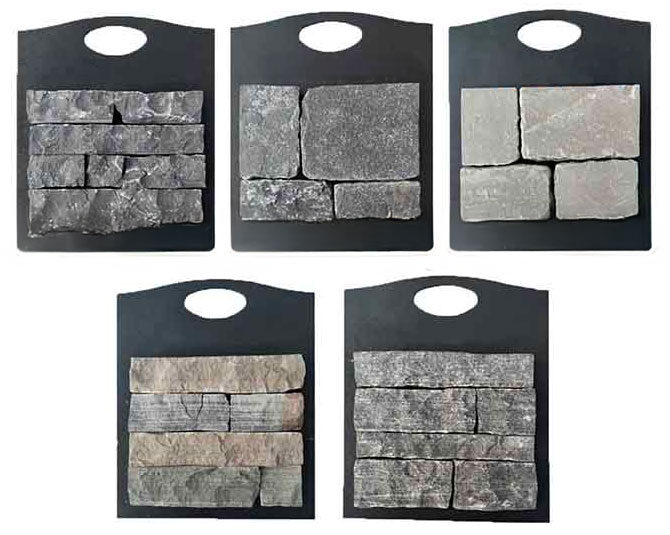
Always Order Samples First
This sounds obvious, but many people skip it — especially if they’re short on time or ordering online. Don’t.
Most reputable suppliers offer sample boards or small panels for a low cost (or even free). These let you:
- Compare stone options directly against your siding, trim, or brick
- Check undertones in natural light — not showroom lighting
- Feel the texture and see the true finish (matte vs. glossy, rough vs. smooth)
Pro tip: View samples at different times of day — morning, midday, evening — to see how lighting affects color.
Use Online Visualizers (But Don’t Rely on Them 100%)
Many stone veneer brands and building supply stores offer online visualizer tools. You upload a photo of your home or use a stock image, then digitally apply different stone styles to see how they look.
Here are a few to try:
Simple product galleries the R-Stone Gallery are also useful.
These tools are great for:
- Narrowing down your choices
- Getting a sense of proportion and placement
- Trying combinations with siding and trim colors
Just don’t use them as your final decision-maker. They’re useful guides, not guarantees.
Norm’s Note: DIY Mock-Up on Your House
Here’s a quick hack:
- Print out a high-quality photo of your home.
- Cut out small photos of the stone veneer samples.
- Stick or overlay them onto the areas you plan to install stone.
It’s not perfect, but it can help you visualize the scale and placement better than imagining it in your head.
What to Avoid
- Guessing based on small swatches — those 2×2 inch tiles aren’t enough to judge a whole façade
- Relying only on trends or digital mock-ups
- Committing before seeing the stone against your actual house
Testing your choice with samples and visual tools takes a little more time — but it can save you thousands in regrets. You wouldn’t choose paint without a swatch. Don’t treat stone veneer any differently.
Final Tips to Avoid Common Mistakes
You’re almost ready to choose your stone veneer — but before you pull the trigger, here are the most common mistakes people make (and how to dodge them like a pro).
Mistake 1: Matching Too Much
Trying to match stone exactly to your siding or trim color can backfire. If everything is the same tone, your exterior will look flat and lifeless.
✅ Do this instead: Aim for complementary colors, not identical ones. Let each material have its own personality while still fitting into the overall vibe.
Mistake 2: Ignoring Undertones
We’ve said it before, but it’s worth repeating: matching the color is not enough. If the undertones clash — warm vs. cool — the whole exterior can feel off.
✅ Do this instead: Compare undertones side-by-side in natural daylight. Choose stone that fits your home’s emotional tone: warm, cool, earthy, or modern.
Mistake 3: Overusing Stone
Stone veneer is powerful — but too much of it can overwhelm your home. Wrapping every wall in stone often looks overdone and actually cheapens the effect.
✅ Do this instead: Use stone as an accent, not the main event. Focus on key architectural features: the base, entryway, columns, chimney, or one standout wall.
Mistake 4: Skipping the Sample Phase
Yes, samples take time. Yes, mockups require effort. But skipping this step is how people end up ripping it all off six months later.
✅ Do this instead: Get full-size samples. View them against your home in different lighting. Take your time. It’s worth it.
Mistake 5: Choosing What’s Trendy Over What Works
Trends are fun to browse. But what’s hot today might not age well — especially on your biggest investment.
✅ Do this instead: Anchor your choices in your home’s style, not what’s trending on Instagram. The best exteriors feel timeless and authentic, not forced.
Quick Recap Checklist
Before you commit, make sure you’ve:
- Matched undertones, not just colors
- Chosen texture that suits your home’s style
- Used stone as a complement, not a competitor
- Paired stone carefully with existing materials
- Sampled and visualized before buying in bulk
- That wraps up the core of your stone veneer decision-making guide. Ready for the final Conclusion section?
Great — here’s the final section to close out the blog post with clarity and confidence.
Conclusion:
Choose with Confidence, Not Guesswork
Choosing stone veneer isn’t just a design decision — it’s a financial and emotional one, too. You’re not just picking a texture or color. You’re shaping how your home feels every time you pull into the driveway, and how others see it from the street.
The good news? You don’t need to be a designer to get it right. You just need a clear plan.
Here’s what you now know:
- Start with your home’s style — let that guide every other decision.
- Follow the golden rule: complement, don’t compete.
- Look past color — undertones and texture matter just as much.
- Pair your stone thoughtfully with other materials.
- Don’t rush — test and visualize before you commit.
- Prioritize what feels balanced and timeless, not just what’s trending.
By taking the time to think through these steps, you’ll make a choice that doesn’t just look good now — it will still look good years down the line.
Bottom line: Stone veneer is a powerful tool for elevating your home’s exterior. Use it well, and you’ll add curb appeal, personality, and lasting value.
Ready to Transform Your Home’s Exterior with Stone Veneer?
Don’t leave your curb appeal to chance. Whether you’re starting from scratch or upgrading your current exterior, our team can help you choose and install the perfect stone veneer that complements your home’s style — and lasts for years to come.
At Navigator Stone & Fence, we provide:
- Expert guidance on color, texture, and placement
- Professional installation with attention to detail
- Boosted curb appeal and long-term value
Get in touch today for a free consultation by requesting an estimate—or check out our gallery of past projects for some inspiration.
FAQs
Does stone veneer increase home value?
When used tastefully, yes. Stone veneer can boost curb appeal and make your home stand out. Just avoid overuse or trendy choices that may not age well. Timeless, complementary styles tend to offer the best long-term value.
Can I install stone veneer myself?
Some DIY-savvy homeowners can install manufactured stone veneer, especially on small areas like porch columns or accent walls. But for larger surfaces or natural stone, it’s best to hire a professional to ensure proper installation, drainage, and long-term durability.
Should stone veneer match my roof or siding?
It doesn’t need to match exactly — it should complement both. Start with your siding and trim, then choose a stone that blends naturally with those elements. If your roof is a prominent visual feature, make sure the stone doesn’t clash with its color or texture.
Is natural stone better than manufactured stone veneer?
Natural stone is more durable and offers unique, organic variation, but it’s also heavier, more expensive, and harder to install. Manufactured stone veneer is lighter, more affordable, and comes in a wide variety of styles — making it a great option for most residential projects.
Can I use stone veneer on just part of my home?
Absolutely. In fact, using stone as a feature — such as around the entryway, on columns, or as a lower “skirt” around the base of the house — is often more visually effective than covering the entire façade.
How do I avoid my stone veneer looking fake?
Stick to high-quality veneer products with realistic texture and variation. Avoid overly uniform shapes or colors, and pair your stone with natural-looking materials like wood or stucco. Most importantly, install it in the right proportion — using it as an accent, not everywhere.
What type of stone veneer looks best on a modern home?
For modern or contemporary homes, dry stack ledgestone in cool tones (like slate, charcoal, or soft grey) tends to work best. The clean lines and minimal jointing create a sleek, architectural feel that matches modern design.
Should stone veneer match my roof or siding?
It doesn’t need to match exactly — it should complement both. Start with your siding and trim, then choose a stone that blends naturally with those elements. If your roof is a prominent visual feature, make sure the stone doesn’t clash with its color or texture.
Can I mix stone veneer with brick on the same house?
Yes, but do it carefully. The key is to match undertones and scale. Pair warm brick (like red or brown) with warm-toned stone in similar textures. Use one material as the dominant element and the other as an accent to avoid clashing.
What color stone veneer goes with gray siding?
Stone veneer with cool undertones — like charcoal, slate, or blue-gray — works best with gray siding. Just make sure the undertones of both the siding and the stone align (e.g., warm greys with warm stones, cool greys with cool stones).

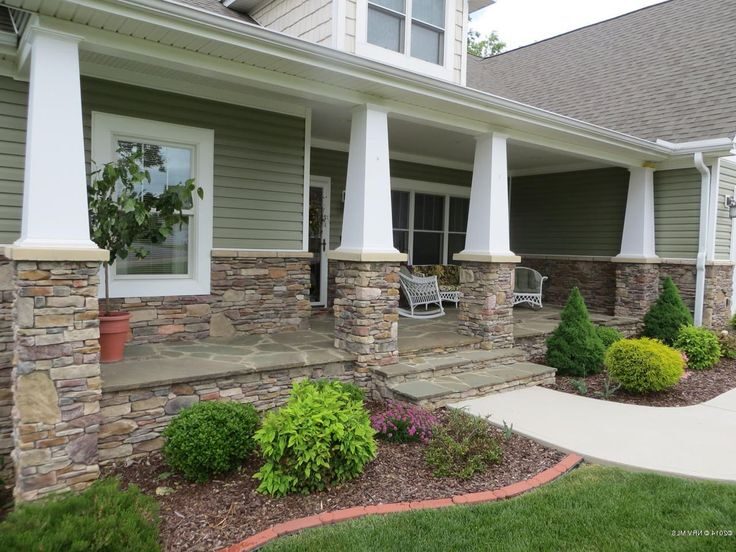



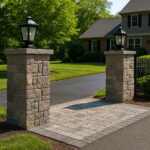

Leave a Reply